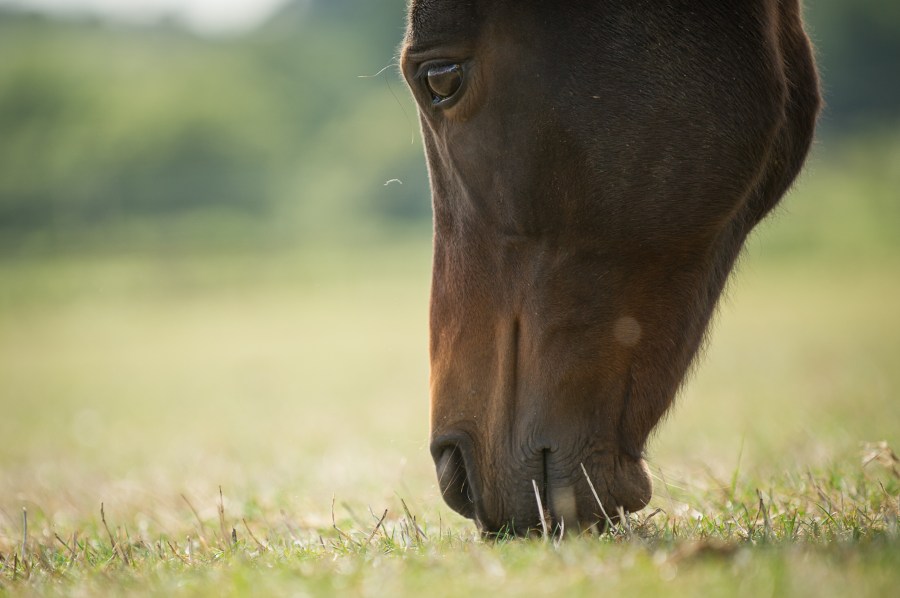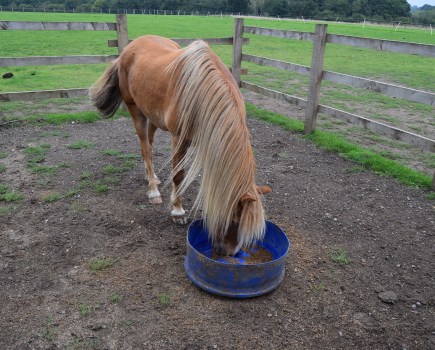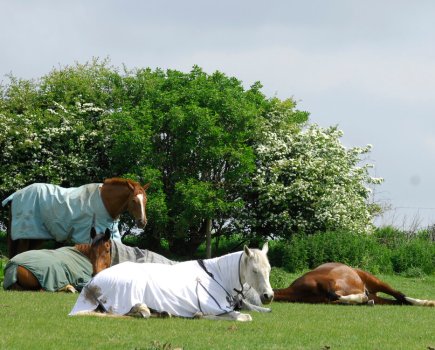In partnership with SPILLERS™
Did you know that saliva provides a natural buffer to the acid in a horse’s stomach — and it is this stomach acid that causes gastric ulcers? Unlike people, horses only produce saliva when they chew. This is why long periods without eating increases stomach acidity, which means providing your horse with a good diet and plenty of opportunities to chew is essential for their health.
In one study, the risk of non-glandular ulcers was found to be approximately four times higher in horses left for more than six hours without access to forage, although the risk may be higher during the day. Horses with free access to forage tend to spend less time eating overnight and stomach pH has been seen to drop during the early hours of the morning, regardless of whether horses have access to forage. As they aren’t exercised overnight, gastric splashing is also less likely to occur. It may be useful to bear this mind when deciding how best to divide restricted rations of forage.
Extending eating time
The longer your horse spends eating, the more they chew and in turn more saliva is produced. To extend chewing time, consider feeding hay, haylage or straw in double-layered, small holed haylage nets to help extend eating time. In one study, feeding hay in a single, small holed haylage net increased eating time by only five minutes per kilo – this would equate to just 30 minutes if feeding 6kg hay (approximately three sections from a standard rectangular bale).
However, another study found that feeding 6kg of hay in three, double-layered, small holed haylage nets could extend eating time by two hours per night versus feeding the same amount of hay in a single net. Alternatively, try dividing forage into multiple smaller servings or using ‘slow feeders’. Recent research has shown the risk of gastric ulcers to be lower in horses fed forage three times a day versus twice a day.
Grazing
The risk of gastric ulcers generally seems lower in horses at pasture. So for horses who are overweight or prone to weight gain and so have a restricted grass intake, consider strip grazing or using a grazing muzzle. This may prove to be an effective way of allowing your horse to spend more time out in the field, while helping to keep their waistline in check.
Other things to bear in mind are:
- Turnout may be counterproductive if it increases stress in your horse. A stressed horse stops eating; a stressed horse with an empty stomach who is charging around in their field because they are unhappy will have acid splashing around in their stomach.
- Grazing muzzles can be used all year round provided the grass is an appropriate length. If it is too long or too short, the horse or pony may not be able to graze at all.
- Access to grazing may need to be restricted or removed completely for laminitics, especially at certain times of year or for those at very high risk.
Soaking hay
Soaking hay helps to reduce the water-soluble carbohydrate (WSC) or ‘sugar’ content, and less sugar means fewer calories. The question of how long to soak hay for often results in conflicting advice and, in truth, the answer isn’t set in stone.
Based on published research, soaking for 1-3 hours in warm weather and 6-12 hours in cold weather is a good guide. Soaking also results in a loss of dry matter – essentially the loss of sugar and other nutrients into the water means each slice of hay will contain more water and less ‘hay’ post soaking. Increasing the amount of hay you soak by 20% to compensate will help to ensure you don’t inadvertently restrict the amount of forage you feed too severely.
Feeding straw
Although feeding straw as the sole forage supply has been seen to increase the risk of gastric ulcers in some horses, recent research found that replacing 50% of the total forage with straw did not (30% may be more appropriate for some horses). Remember that any straw fed to horses should be of good hygienic quality and introduced gradually.
Add short-chopped fibre to meals
Adding short-chopped fibre to meals helps to increase chewing and in turn saliva production which may be of added benefit to horses on restricted forage. Choose a low-calorie fibre and ideally one containing alfalfa as the high protein and calcium content is thought to help buffer stomach acid. Although this advice is generally applied to all horses prone to gastric ulcers, it may be of added benefit to those on restricted forage rations.
![]() Have you heard about Your Horse’s #FitNotFat campaign? Equine obesity is an enormous welfare problem and we’re on a mission to provide owners and riders with the knowledge, skills and information you need to keep your horse in tip-top health. It could be life saving! Find out more
Have you heard about Your Horse’s #FitNotFat campaign? Equine obesity is an enormous welfare problem and we’re on a mission to provide owners and riders with the knowledge, skills and information you need to keep your horse in tip-top health. It could be life saving! Find out more
Related content
- Why the time of day you ride and feed is affects gastric ulcers
- Gastric ulcers is the leading cause of horse health insurance claims
- How a horse’s digestive system works
- How to feed straw safely
- 11 surprising facts you might not know about the grass your horse eats
- Can you spot an overweight horse? Put your knowledge to the test








